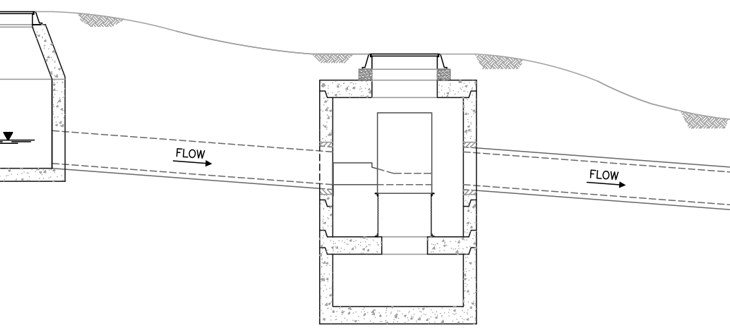
Don’t Lose Your Head over Head Loss!
When it comes to using hydrodynamic separator (HDS) treatment devices, it is becoming commonplace to integrate them into storm sewer networks without worrying about the hydraulic impact of the device. After all, the majority of these devices are manholes or vaults with flow-through treatment, which are seemingly uncomplicated when compared to those with cartridges and retention controls like media filters and sand filters. Despite the appeal in its simplicity, using this approach for your own storm sewer design may be more of a disservice than a convenience. All HDS devices have an operational head loss associated with the treatment they provide. When factors like head loss are ignored, problems start to surface upstream: backed-up storm drains, flooded streets, and pressurized storm sewers are a few of the more significant consequences. So when should we consider the hydraulic impact of an HDS device? And what is its impact on the storm sewer network?
When does it matter?
The greatest hydraulic impact of an HDS device boils down to its operational head loss. While it is often overlooked, considering the head loss added to your network by manufactured treatment devices is good engineering practice to ensure the network operates as expected. The head loss associated with different types and sizes of HDS devices can vary in magnitude; knowing the impact of the selected device can make or break your storm sewer design. Head loss considerations are particularly important if you have a shallow depth to outfall, prevalent tailwater conditions, or other hydraulically sensitive considerations.
What is the impact?
All HDS devices have internal components that encourage the separation of water and suspended particles. These components can take the form of permanent pools, weirs, baffle walls, screens, and volute chambers. All of these internal components of an HDS device add head loss to the system and can potentially have significant impacts on the hydraulic and energy grade lines of the storm sewer. The most common mechanism behind particle separation is sedimentation as characterized by Stokes’ Law. To encourage the suspended particles to settle, HDS devices swirl the captured stormwater in order to extend the flow path and provide the time required for smaller particles to fall out of the water. This hydrodynamic action adds friction losses due to increased surface contact and redirection of flow.
Not all HDS devices are created equally. The operational head loss of an HDS device will vary not only between model sizes but also by model/manufacturer. The internal mechanisms of each HDS device on the market are unique and should be evaluated to ensure the best hydraulic fit for your storm sewer network. When you are working with the manufacturer of an HDS device, remembering to inquire about the headloss and hydraulic impact of the device will not only make you more informed about your storm sewer design, it may save you from future headache.
